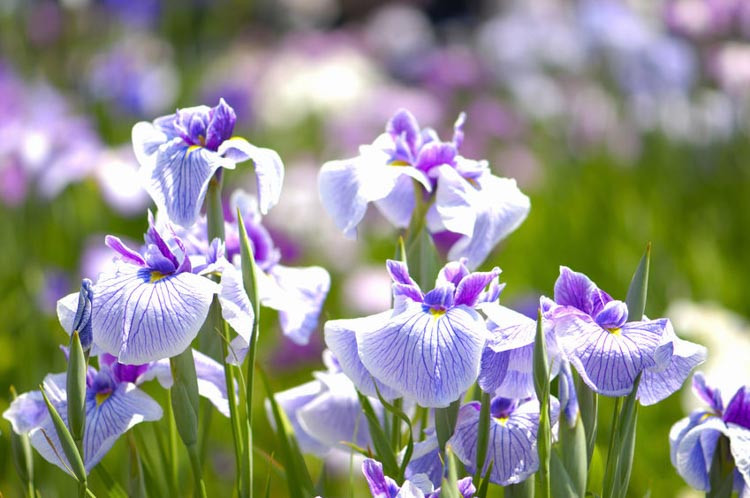Iris ensata (Japanese Iris)
Iris ensata, also known as Japanese iris, is a flowering plant native to Japan and other parts of Asia. This plant is renowned for its large, showy blooms, which come in a range of colors and patterns. Japanese irises grow best in moist soil and prefer partial to full sun.
Flowers: One of the distinguishing features of the Japanese iris is its large, flat flowers. The blooms can measure up to 8-10 inches (20-25 cm) across and come in shades of blue, purple, pink, and white. The petals of the Japanese iris are broad and flat, with distinctive markings and patterns.
Size: The flowers appear on tall stems that can reach up to 4 feet (1.2 meters) in height.
Hardiness: Japanese irises can be grown as perennials in zones 4-9.
Uses: Japanese irises are relatively easy to care for, but they require consistent moisture and well-draining soil. These plants can be used in various landscaping applications, including as borders, accent plants, or water gardens. Another interesting fact about Japanese irises is their use in traditional medicine. In Japan and China, the roots and leaves of the Japanese iris have been used for centuries to treat a variety of ailments, including fever, inflammation, and gastrointestinal issues.
Pollinators: Japanese irises are known for their ability to attract pollinators such as bees and butterflies. These insects are drawn to the large, showy blooms and help to facilitate pollination.
Culture: One of the unique aspects of Japanese irises is their cultural significance in Japan. These flowers are highly regarded and are often depicted in traditional Japanese art and literature. In Japan, the Japanese iris is known as ayame and is associated with the iris festival, which takes place in May.
Overall, the Japanese iris is a beautiful and unique plant that offers both ornamental and cultural value. With proper care, these plants can provide years of beauty in gardens and landscapes.

